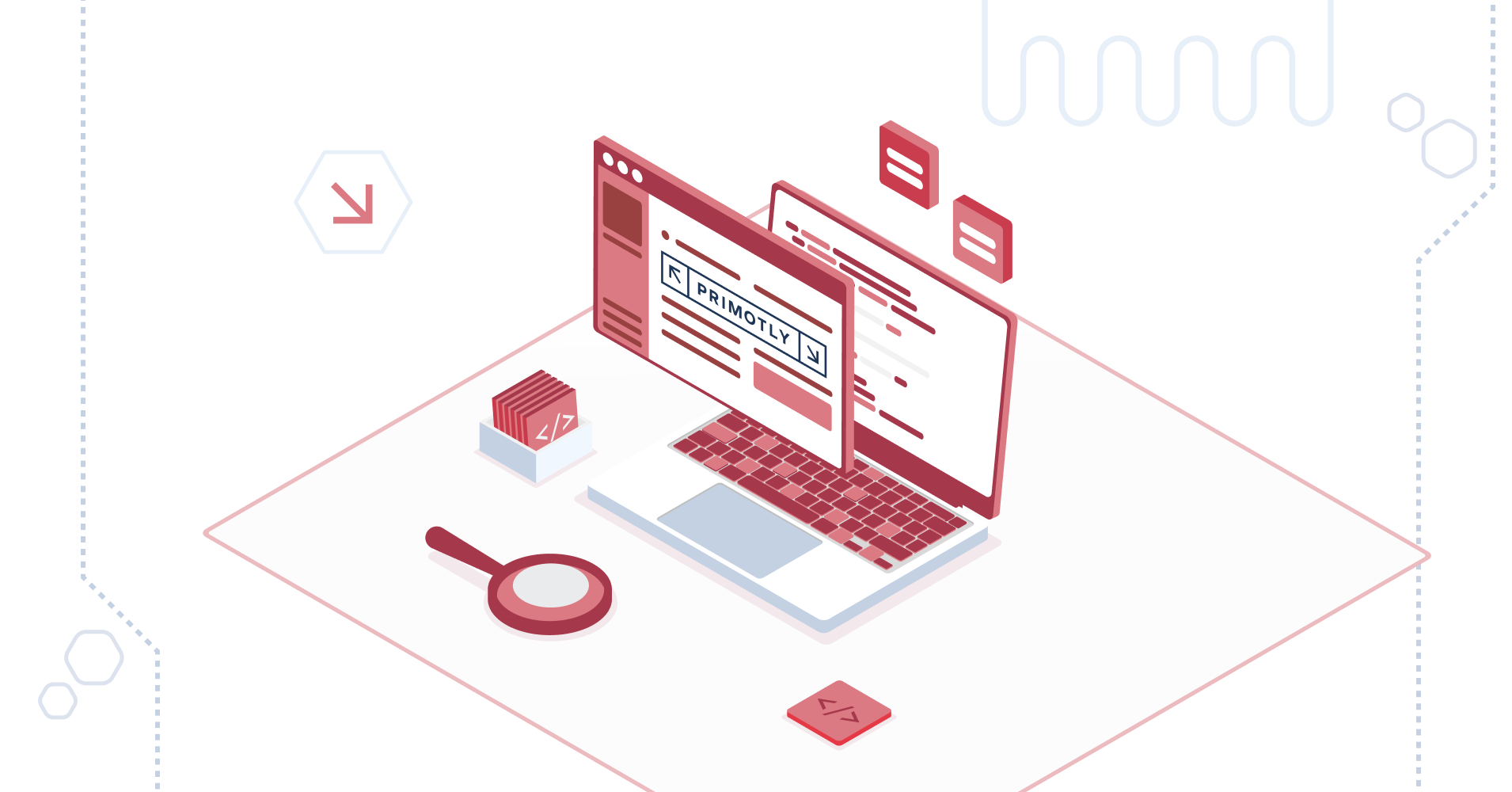The word “debt” always has negative connotations—there are no exceptions in the tech world. Much like financial debt, technical debt accrues interest over time, manifesting in the form of increased complexity, decreased system performance, and impeded development speed.

How is the technical debt stopping your growth and how to fix it? The following article will shed light on this issue and show possible solutions.
In this article we will discuss:
The definition, dangers, and causes of the technical debt.
The consequences of ignoring growing tech debt.
How to avoid it and the best strategies to reduct technical debt.
What’s the code refactoring and what challenges it brings.
What Is the Technical Debt?
Technical debt (also called tech debt or code debt) is a concept in software development that describes the accumulated costs a software project incurs when developers choose to implement a fast solution, often at the expense of a more thorough or sustainable approach.
Why Is the Technical Debt Dangerous?
The metaphor underscores the notion akin to financial obligations: the longer technical debt persists without remediation, the more it compounds, hindering the agility and efficiency of future development efforts.
What Are the Common Causes of Technical Debt?
Technical debt can stem from various causes. Have you observed any of these red flags? They may indicate that technical debt could be a significant issue in your project.
Pressure of time
When development teams are under tight deadlines, there is a tendency to prioritize quick solutions over optimal ones.
Lack of knowledge or skill
Developers who are new to a technology or lack experience may produce code that doesn't adhere to best practices.
Overly complicated technical design
Failure to follow the principle of simplicity in design can result in unnecessary complexity that accumulates as technical debt over time.
Delayed refactoring
Each instance of postponed refactoring contributes to the accumulation of technical debt, making future maintenance more challenging.
Insufficient or lack of testing
Insufficient testing, such as gaps in unit testing or neglecting certain edge cases, can lead to undetected bugs and issues. When there’s not enough time for testing it may result in lower quality of finished software.
Lack of ownership
Without a sense of responsibility for the entire codebase, developers may focus solely on their immediate tasks, neglecting overall code quality and accumulating technical debt.
Types of Tech Debt
Technical debt can be classified into intentional and unintentional categories based on the decisions and actions that lead to its accumulation:
Intentional Technical Debt
Intentional technical debt is incurred consciously and purposefully. It often involves making a trade-off between the need for quick delivery or meeting short-term goals and the ideal or optimal solution.
Examples:
Time-to-Market Decision: Choosing a faster, but less optimal, solution to meet tight deadlines.
Feature Prioritization: Prioritizing the delivery of new features over code refactoring or extensive testing.
Prototyping: Building a quick prototype with the intention of refining it later.
Unintentional Tech Debt
Unintentional technical debt accumulates due to factors like lack of awareness, oversight, or changes in project requirements. It is typically a result of not fully understanding the long-term consequences of certain decisions.
Examples:
Lack of Knowledge: Using outdated or unfamiliar technologies without understanding their implications.
Changing Requirements: Frequent changes in project requirements that lead to shortcuts or suboptimal solutions.
Inadequate Communication: Poor communication within the development team that results in misunderstandings and suboptimal implementations.
Understanding whether technical debt is intentional or unintentional is crucial for addressing it effectively. Intentional technical debt might be a strategic decision made with the understanding of the consequences, while unintentional technical debt may result from factors that need to be identified and addressed to prevent its negative impact on the project in the long run. Both types require careful management and mitigation strategies to maintain a healthy and sustainable software development process.
Repercussions of Unaddressed Technical Debt
When technical debt remains unaddressed, its ramifications extend beyond the initial compromises made during development. Unpaid technical debt manifests in several ways, impeding the software development lifecycle and diminishing the overall health of a project.
Overly Complicated, Hard to Read Code
Firstly, the accumulation of technical debt can lead to a progressively convoluted and intricate codebase. Expedient solutions, while effective in the short term, often lack the elegance and simplicity that foster maintainability.
Consequently, future modifications become hard to implement, as developers grapple with deciphering and navigating complex code structures.
Code that is Challenging to Work With
Secondly, the delayed repayment of technical debt jeopardizes the adaptability and responsiveness of a software project.
As the debt accumulates, implementing changes, adding new features, or addressing emerging issues becomes a formidable challenge. The development process slows down, and the risk of introducing unintended consequences rises, as the original, expedient solutions may not seamlessly accommodate subsequent alterations.
How to Avoid Tech Debt?
Avoiding technical debt is crucial for maintaining a healthy and sustainable software development process. How to do it? Here are some strategies to help you minimize or avoid technical debt:
Code Reviews
Conduct regular code reviews to ensure that all code meets established coding standards. Peer reviews help identify potential issues early in the development process.
Follow Coding Standards
Establish and adhere to coding standards. Consistent coding practices make the codebase more maintainable and reduce the likelihood of introducing technical debt.
Automated Testing
Implement comprehensive automated testing practices, including unit tests, integration tests, and end-to-end tests. Automated testing helps catch bugs early and ensures that changes don't introduce new issues.
Refactoring
Allocate time for refactoring as part of your development process. Refactor code to improve its structure, readability, and maintainability without changing its external behavior.
Sprint Planning
Plan sprints carefully, considering the long-term impact of each decision. Avoid taking shortcuts just to meet short-term deadlines if they compromise the code quality.
Documentation
Maintain thorough documentation for your codebase. Well-documented code makes it easier for developers to understand and maintain the code, reducing the risk of introducing technical debt.
Continuous Integration/Continuous Deployment (CI/CD)
Implement CI/CD pipelines to automate the build, test, and deployment processes. This helps catch issues early in the development cycle and reduces the likelihood of introducing technical debt during deployment.
Empower Developers to Speak Up
Create a culture where developers feel empowered to voice concerns about potential technical debt. Encourage open communication within the team to address issues early on.
How to Manage the Tech Debt in 6 Steps
The perfect situation would be not to allow tech debt to accumulate. Often it’s not possible to avoid it completely, so you should implement those 6 steps in your strategy to manage the tech debt!
Identify and Acknowledge the Problem.
Set Priorities.
Create a Technical Debt Backlog.
Refactor the Code.
Create Documentation.
Remember About Code Reviews.
1. Identify and Acknowledge the Tech Debt
If you find technical debt, you need to act fast, because the more you try to ignore it, the more problems it will create. Acknowledge and communicate technical debt to the development team and stakeholders, to create a strategy for how to deal with it.
2. Set Priorities
Categorize technical debt based on its impact and urgency. Some issues may be critical and should be taken care of first, while others can wait. Prioritize addressing high-impact and high-urgency technical debt first.
3. Create a Technical Debt Backlog
The organization is the key to implementing improvements. Maintain a backlog of identified technical debt items. It will help the whole team involved in the process. Update and review the backlog regularly, ensuring it reflects the current state of the project.
4. Code Refactoring
Another important step is code refactoring. At this stage, developers improve code quality. It’s helpful to break down large refactorings into smaller, manageable tasks that can be integrated into regular development cycles.
5. Documentation
Maintain up-to-date documentation to help new developers understand the codebase and make it easier for the existing team to work with the code.
6. Regular Code Reviews
Conduct thorough code reviews to catch and address potential issues before they become technical debt. Regular reviews are one of the most effective ways to prevent tech debt.
See our tips on how to write better code reviews.
What Is Code Refactoring?
In the simplest words, code refactoring is the process of restructuring existing computer code without changing its external behavior.
Why Code Refactoring Is Needed?
Improving Code Readability: Refactoring aims to enhance the clarity and readability of code. By organizing and simplifying code, developers can better understand its logic, making maintenance and future development more efficient.
Enhancing Code Maintainability: As software evolves, the codebase undergoes changes and additions. Refactoring ensures that the code remains maintainable over time. Well-organized code is easier to modify, debug, and extend without introducing errors.
Bug Fixing: Refactoring can help identify and fix bugs more easily. Simplifying complex code structures and eliminating redundancy can reduce the chances of introducing errors during maintenance or updates.
Code Reusability: Refactoring allows developers to extract reusable components from existing code. This promotes a modular and DRY (Don't Repeat Yourself) approach, where common functionalities are encapsulated, reducing redundancy and promoting code reuse.
Code Smell Elimination: Code smells are indicators of potential issues, such as duplicated code, long methods, or poorly named variables. Refactoring helps eliminate these code smells, improving code quality and maintainability.
What Are the Challenges of Code Refactoring?
While it’s beneficial for improving code quality and maintainability, it can pose several challenges. The difficulty of refactoring code can vary depending on the size and complexity of the codebase, the experience of the development team, and the existing architecture.
Here are some of the challenges commonly associated with code refactoring:
Time and Resource Constraints
Refactoring takes time, and in a fast-paced development environment, there may be pressure to prioritize new feature development over code cleanup. Limited resources and tight deadlines can make it challenging to allocate time for extensive refactoring.
Understanding Existing Code
One of the most challenging aspects is understanding the existing code thoroughly. With a deep understanding of the code's functionality and dependencies, it's easier to make informed decisions during the refactoring process.
Legacy Code
Refactoring legacy code, which may be outdated, poorly structured, or written in older programming languages, poses additional challenges. Legacy systems often lack modern development practices and may require more extensive rewrites.
Read more about strategies on how to deal with legacy code.
Tech Debt Got Out of Control? Primotly Have Got Your Back!
Do you have new ideas for your digital product but legacy software is stopping your growth? Do you lack the resources to deal with tech debt in your company?
Our original Building Products model can address the issue. We aren’t scared of challenges. The success stories of our clients show that we can help with legacy code and refactoring, eliminating technical debt.
Your application will be ready for new functionalities and growth. Our team will make sure that everything is up to date, compatible with current standards, stable, and secure.
Primotly’s Free Workshops: Let’s Meet and Talk!
During free workshops, we will diagnose the problem and create a plan for how to proceed with it. Find out more about our Building Products model.
How to Deal with Technical Debt
Recognizing and mitigating technical debt is integral to sustaining the longevity and vitality of a software project. Awareness of the consequences of its neglect helps to introduce solutions at the stage of software development so that maintenance and future growth are undisturbed.





















